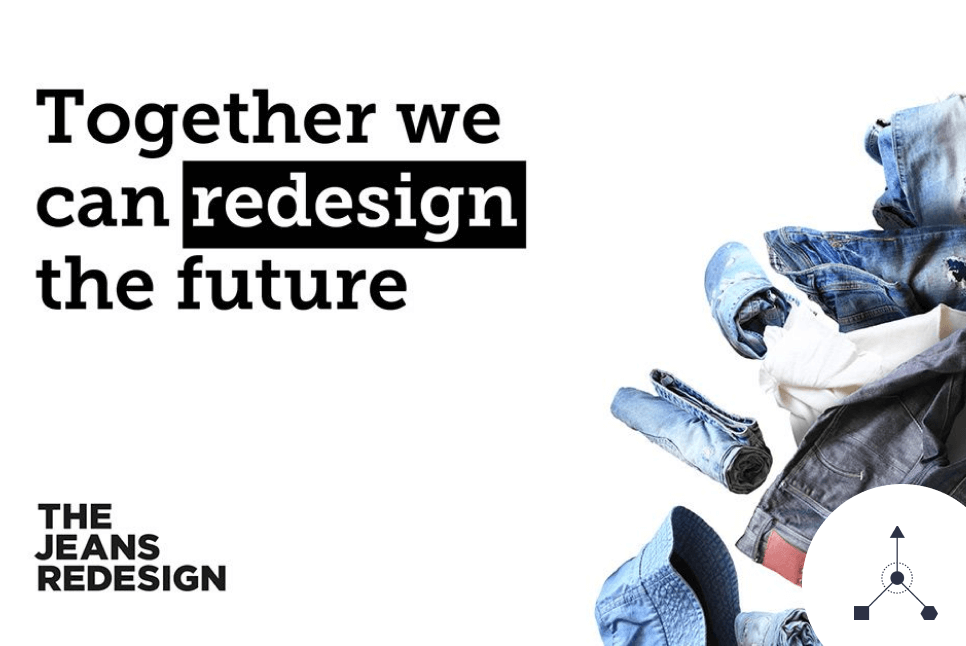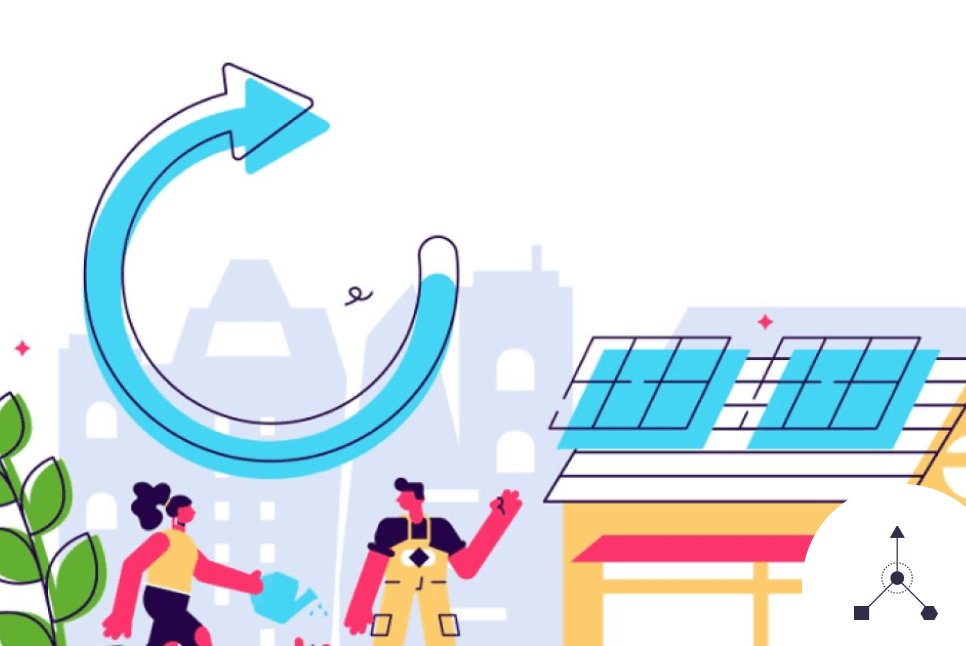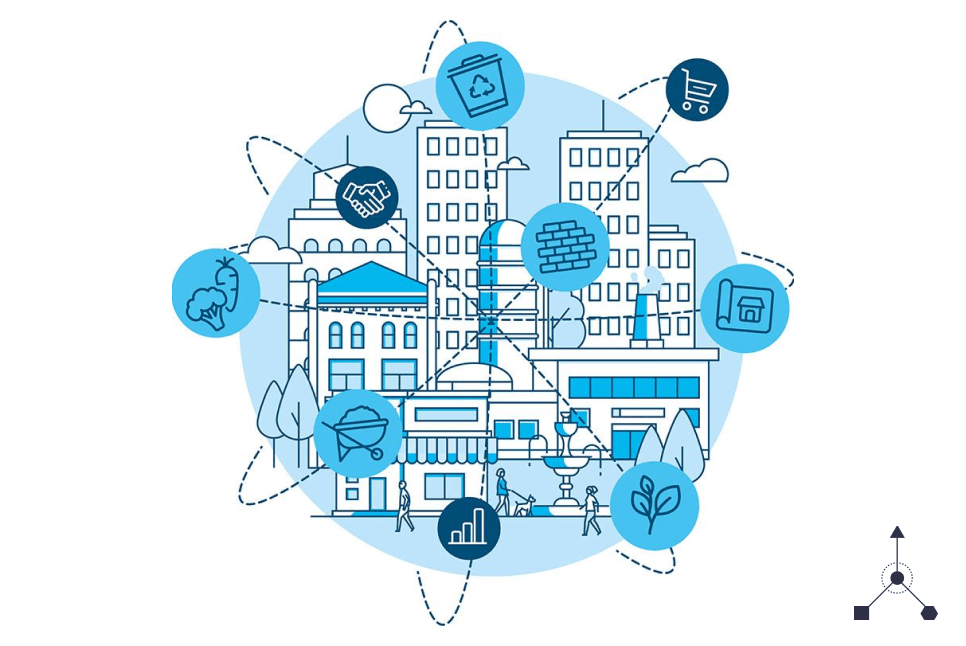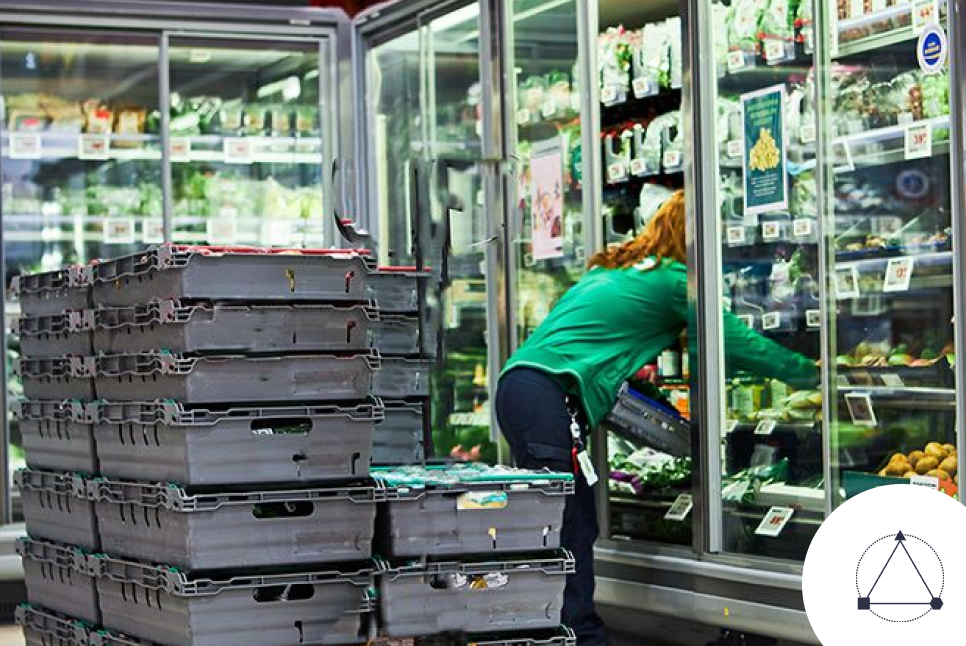Introduction
The transition to a circular economy is a complex systems challenge. Navigating complexity requires empathy. Understanding the values, interests, and motivations of others is the basis for successful collaboration. It also requires embracing new and previously unimagined connections – of people, institutions, industries, resources, and information. As a result, cooperation is required to achieve meaningful scale and impact.
“Businesses innovating across ecosystems are having to be incredibly creative about the new customers they might have, the new kinds of partnerships they might need, the new roles they might play.”
- Chris Grantham, IDEO Alum (former Executive Director, Circular Economy)
Anyone who has worked on a project, whether within business, the public sector, or for research, knows that collaboration is required to make progress. Yet, the reason this is acutely relevant to the circular economycircular economyA systems solution framework that tackles global challenges like climate change, biodiversity loss, waste, and pollution. It is based on three principles, driven by design: eliminate waste and pollution, circulate products and materials (at their highest value), and regenerate nature. shift is that people or organisations that pursue circular economy innovation in silos may find themselves stuck ‘downstream’, simply dealing with symptoms of the linear economylinear economyAn economy in which finite resources are extracted to make products that are used - generally not to their full potential - and then thrown away ('take-make-waste'). that seem inevitable.
Circular design pushes us to look further upstream for interventions – addressing the root cause, rather than just the symptoms. The problem is, as we go further upstream, the type of innovation required changes. For example, procurement in a linear model is traditionally a cost centre. Circular procurement, on the other hand, treats suppliers as partners in creating further value beyond one-off transactions and helps suppliers (and potential suppliers) create a business case around new demands. In this circular approach, procurement ‘dematerialises’, turning products into services that can be leased, reused, sold back, or shared. This model presents a more diffuse and unfamiliar challenge.
The author Dan Heath has described this in his book about the topic, observing that, unlike a doctor performing life-saving heart surgery, “upstream work is chosen, not demanded…if the work is not chosen by someone, the underlying problem won’t get solved…the parties who are capable of addressing a problem are saying, that’s not mine to fix.”
So when it comes to circular design, the imperative is to bring diverse actors to the process and create the space for them to use their strengths to work on the intersection of issues, and support them as they discover new avenues and actions to shift the system at different scales. Successful collaborative action brings together the unique qualities, expertise, innovation and manufacturing capabilities, financial resources, and influence of an organisation, community, or individual to respond to a circular design challenge.
“Chemistry is at the core of the circular transformation of value chains. We cannot imagine alone how the resource can circulate or be regenerated across the value chain. So it is crucial to engage systemically with diverse teams and organisations across a value chain. By starting conversations at an early stage, we can co-design a chemical product that has circular potential from the outset - we design these keeping the circular economy principles and the butterfly diagram in mind. Coming together early in the creation process increases the possibilities of the products' cycle, of the companies that work together and at the same time optimising the value for everyone.”
- Isabelle Gubelmann-Bonneau, Senior VP Head Circular Economy, Solvay
Working in a pre-competitive environment with organisations can help to overcome systemic barriers, remove system lock-ins, and raise ambition across the board. Designing the right conditions for mission-led partnerships can make it easier and faster to come together around circular economy challenges.
“To shift established business models within the built environment, we need to influence whole ecosystems, not just architects and investors. Arup has established working relationships with partners across the public and private sector, focussed on knowledge sharing and collaboration. We work closely with suppliers, logistics firms and policy makers, as well as partners in the circularity space including Ellen MacArthur Foundation, World Business Council for Sustainable Development and the World Green Building Council.”
- Martin Pauli, Global Circular Economy Services Leader, Arup
Collaboration for the circular economy needs to take place between actors from the same value chain, across value chains and sectors, and include actors of different scopes of action from local to global, from start-ups and SMEs to multinational corporations. Being aware of the latest circular start-ups and niche innovations disrupting the linear system is a way to begin immersing ourselves in the global landscape of emerging circular businesses.
There are many angles for collaboration – throughout a value chain, in a pre-competitive arrangement, internally between individuals and teams. Collaboration is not always easy, especially when we acknowledge we’re living in a transition in which linear and circular paradigms will coexist for some years. However, designers have tried and tested methods to create the conditions for diverse types of actors to work together. It is important to design the processes, experiences, and spaces to trigger collaborations that demonstrate and enable the circular economy.
How to approach it
Work with facilitators experienced in systemic design
Work with facilitators experienced in systems practice to design the environments, experiences, and processes that can bring key actors to a shared mindset. For example, this could be in the context of a design sprint to kickstart collaboration, facilitated by a design agency or an NGO, to capture a fuller picture of the system and identify opportunities to act collectively. These shared experiences outside daily work can help to create personal connections and build long-term relationships as well as overcome barriers.
Share project ownership, benefits, and risks
Consider the system potential and how each actor plays a complementary role in generating benefits for the whole, as well as for each individual. Benefits should come from the overall success of the circular system, where the outcome is greater than the sum of its parts. Equally, risks should be shared equitably across the actors who collaborate to collectively achieve circular and disruptive innovations. Lastly, dive deep into the more ambiguous areas of the value ecosystem rather than overlooking them, as every element should be aligned with the long-term vision.
“If a coffee supplier’s biggest source of revenue at the moment is large corporate offices, then the way in which we could contribute, rather than compete with them, is to tell them how they can actually provide a circular service to their existing clients by using us as a platform that creates and delivers new products from coffee waste, that can serve them as a new revenue stream. And we make money out of selling ingredients to the manufacturers, or in some cases we sell the finished products.”
- Alejandro Franco, co-founder of Kaffe Bueno
Define the roles of each actor
In a multi-actor collaboration, it’s important to identify each actor’s strengths and leverage their unique abilities in the project context – this could be a functional expertise, or part of a storytelling or promotional effort. Make each actor accountable for their contribution.
Raise awareness of scale and context
Decide a meaningful project scale at which to work together, considering the nature and pace of an individual actor/organisations’ operations and their circular economy readiness (e.g. a small scale circular native start-up and a multinational linear organisation). Take into account varying contextual environments, for example differing cultural contexts, standards, and regulations across regions.
Open up knowledge and advance learning
Make knowledge, including partial systems maps, publicly available for others to learn from and build on. By opening up information to peers within and beyond your network, it seeds an ecosystem of reciprocity and an understanding that ‘the more you put in, the more you get out’, much like Open Source or Creative Commons. The acceleration of the transition to a circular economy includes avoiding duplication and reinventing the wheel constantly. Creating guidance for engaging with original content, such as that by Doughnut Economics Action Lab, can help to maintainmaintainKeep a product in its existing state of quality, functionally and/or cosmetically, to guard against failure or decline. It is a practice that retains the highest value of a product by extending its use period. content integrity, while encouraging the sharingsharingThe use of a product by multiple users. It is a practice that retains the highest value of a product by extending its use period. of learnings, stories, and developments with the creative community.
“Arup understands that we have a role to play by actively engaging with the EU ecosystem. Initiatives like the New European Bauhaus are conduits to mainstream all things circular, which alongside the EU Taxonomy will help embed it into our environment. Engagement with policymakers and finance is essential to unlock circular change.”
- Martin Pauli, Global Circular Economy Services Leader, Arup
Ultimately, the start of collaborations requires designing spaces for dialogue and understanding each actors’ views, goals, and strengths to explore possibilities for cooperation. However, once it’s decided how actors will collaborate together, the conditions to work together will need to be adapted to the collaboration archetype. Collaboration archetypes are useful to create common ground and a sense of understanding around the focus of a specific collaborative project. Some examples that are replicable and adaptable to different contexts and industries are:
Examples

The Jeans Redesign
Led by: Ellen MacArthur Foundation
Scope: Product
Collaboration Archetype: Beacon project
Approach: A pre-competitive collaborative beacon project bringing together more than 100 brands, manufacturers, and recyclers across the fashion industry to create circular design guidelines to transform the way jeans are made. Based on the principles of a circular economy, it is a blueprint for collective action to scale circular practices.

Creating Circular Neighbourhoods
Led by: UNEP, Arup, BASE, C40 Cities, Ellen MacArthur Foundation, MASS Design Group, Mexico City’s Ministry of Environment, Prague Institute of Planning and Development
Scope: Neighbourhood
Approach: A collaborative project to inspire city actors (communities, governments, and businesses) to initiate circular economy activities at the neighbourhood level, across construction, servitisation, and food systems. The neighbourhood scale can be a powerful testing environment for circular solutions, acting as a living lab representing community behaviours and their interactions with wider systems.

CityLoops
Led by: ICLEI Europe
Scope: City
Approach: A consortium of seven European cities, coordinated by ICLEI, are piloting a series of demonstration projects to eliminate two of Europe’s most important waste streams: construction and demolition waste (CDW), and bio-waste. The inception phase of participatory planning includes stakeholder mapping and analysis. Solutions are implemented in the demonstration phase with the intention to replicate in order to upscale at regional and European level. Over 30 new tools and processes are being developed and tested, from data instruments, to 3D visualisation tools for simulating impacts, and procurement guidelines for bio-waste products. A key aspect is to make data visible, break silos, contextualise the demonstration actions and create a baseline analysis for a better macro understanding of the waste sectors, inform policy making and unlock and upscale circular actions.

RePack for e-commerce
By: RePack
Scope: Product-service system
Collaboration Archetype: System redesign by new actor(s)
Approach: RePack is a circular-native business model that applies circular design strategies at different levels such as the material and product design (e.g. standardisation, digital product tracking, monomaterial) but also at a business model level (e.g. offering a reusable product-as-a-service).
RePack disrupted the packaging and e-commerce industry first in Helsinki, as a start-up whose business model is based on circular economy principles and meets a key need of existing system actors: eliminating waste from packaging and e-commerce.

Svenska Retursystem
By: Trade Association for Grocery of Sweden and the Swedish Food and Drinks Retailers Association
Scope: Food and packaging sectors
Collaboration Archetype: System redesign by role shift of existing actor(s)
Approach: Svenska Retursystem, SRS, is a smart circular pooling system for the Swedish food industry. SRS mission is to make the supply chain for food and beverage more efficient and better for the environment. The idea of the pooling system is that the distribution of food and beverage should take place in reusable crates and pallets instead of disposable packaging. Food producers, wholesalers, stores and restaurants all share the same reusable crates and pallets, and more than 50% of all fresh produce in Sweden is delivered in reusable crates. The system's effectiveness is due to industry-wide collaboration and the high quality standardised design which enables precise packing systems, automation, reduces transportation costs and risk of food damage. SRS has been a part of the circular economy model for 25 years – eliminating waste and maximising value creation.

Next: Build circular design capabilities
Bursting the bubble of circular design capabilities to distribute and connect the knowledge across teams, functions and departments within an organisation.


